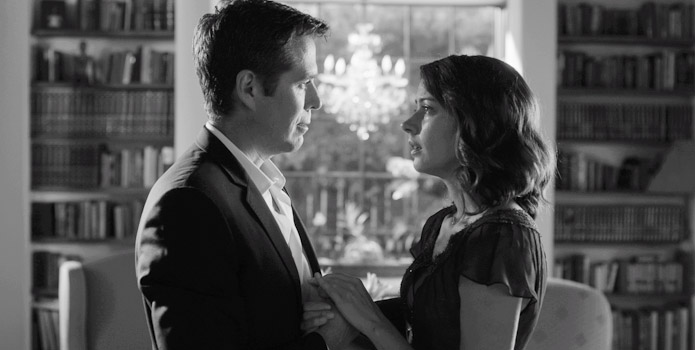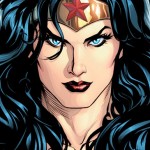The Old Hollywood Soul of Joss Whedon Shines Through in MUCH ADO ABOUT NOTHING

Much Ado About Nothing (2012) — ****
You gotta hand it to Joss Whedon. He knows how to be productive when he’s on vacation.
Whedon’s adaptation of the Bard’s Much Ado About Nothing was shot over 12 days at his home in Santa Monica. Like a DIY filmmaker, Whedon got a bunch of his friends together, actors he has worked with in the past and his brother and sister-in-law (who were there to perform the songs he composed), and made a movie on the fly.
But that’s not the astonishing part. No, what’s really amazing is that Whedon here has created the most original and enjoyable Shakespeare adaptation since Baz Luhrmann directed Romeo + Juliet. It’s a romantic comedy that’s so wonderfully classical, filled with the effervescent banter of old Hollywood, that you almost expect Cary Grant and Katherine Hepburn to walk on screen at any moment.
They don’t, though. Instead this battle of the sexes, following the love and war of Beatrice and Benedick, stars Amy Acker and Alexis Denisof, two of Whedon’s long time collaborators, each of whom appeared on two of his TV shows. There’s Clark Gregg (Agent Coulson in Whedon’s The Avengers), who plays Beatrice’s uncle Leonato, and Fran Kranz (Whedon’s Dollhouse) as Claudio, the man who falls for Leonato’s daughter.
Leonato and Claudio conspire with Leonato’s daughter Hero (Jillian Morgese) and the visiting Don Pedro (Reed Diamond) to have the sparring Beatrice and Benedick fall in love. Diamond, you may know, was also in Dollhouse, while even Morgese has an uncredited role in The Avengers.
Nathan Fillion of Whedon’s Firefly is there, too, along with a co-star from the show, Sean Maher (as the villainous Don John). The list goes on.
Why is all that important? Because of their history with Whedon (as well as the Shakespeare readings he held with them at his house), the cast are perfectly in tune with Whedon, his words and his comedic timing. Visual jokes that would otherwise seem hokey appear fresh and funny. And Acker and Denisof, two unlikely leads for sure, are delightful together, almost taking their previous Whedon-verse romance in a new direction and adding some vigor to it.
Joss Whedon, a master of wordplay if there ever was one, may Shakespeare’s modern match. Unlike ol’ Willie, however, Whedon has the camera on his side. The black-and-white photography adds to the classical farce feel when the movie is light and emphasizes the darker side when events in the film take a turn for the worse. Moreover, the party scene early in the picture is filled with this airy sexuality that can only be captured cinematically. Much Ado, because it uses Shakespeares words, gives Whedon a chance to show that he can be as visually whimsical, sensual and emotional as the words he writes himself.
With Much Ado About Nothing, Whedon proves once again that he’s a master cinematic entertainer. But more than anything he’s made, this film shows, in fact in throws in your face, just how much of an old filmmaker’s soul he really has. His entertainment, like that of Howard Hawks, has the fingerprints of an undercover auteur. That’s what make Much Ado and so much of his other work so special.










